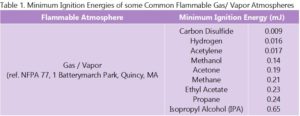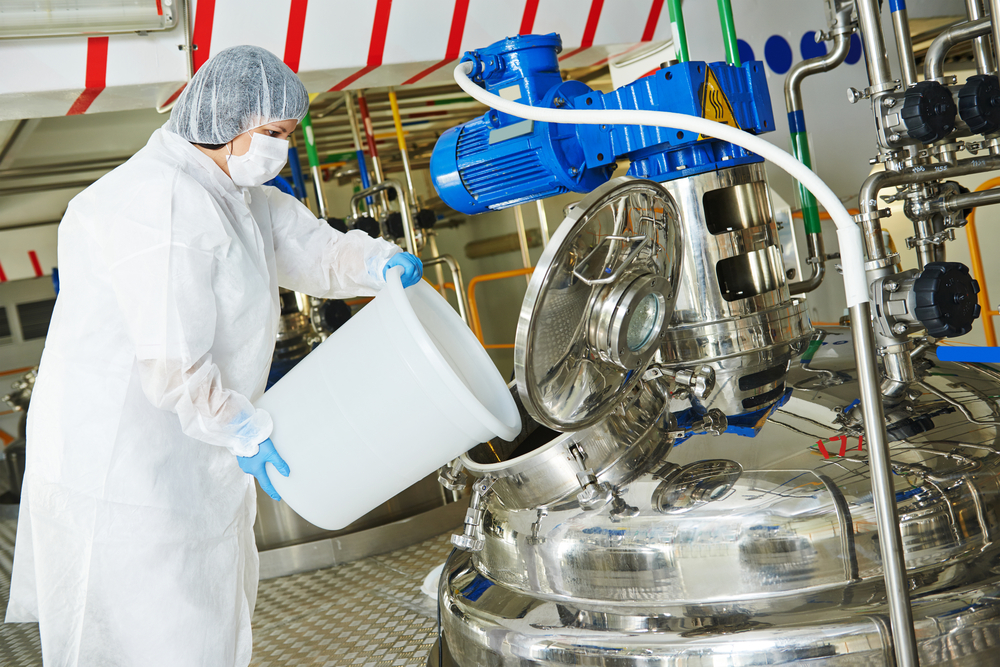Search
Electrostatic Discharges from Plastic Plant & Equipment

Stonehouse Process Safety inbound enquiries; emails ping; the phone warbles – with an electrostatic question.
- “Is it safe to use a plastic dip pipe in a flammable vapor atmosphere?”
- “Can I use plastic bags to transport my powder?”
- “Do I need static-dissipate drums for my low flash-point liquids?”
- “Is there an electrostatic hazard with the super sacks (FIBCs) we are using?”
- “Can my ATEX certified equipment with a plastic case really be used in a ‘classified’ vapor-air zone?” ……… the list goes on ………
All the above are concerned with the use of insulators (‘plastics’) in flammable vapor or dust cloud atmospheres, and there is a lot of confusion about this. It’s time to address static electricity again!
We have written before about the use of plastics in flammable atmospheres, see our article here: Manually Transferring Powders: Explosion Risk Explained – Stonehouse Process Safety (stonehousesafety.com), frequently commenting on the major risk of how equipment made from insulating materials can create isolated conductors; a plastic pallet under a conducting drum collecting powder or liquid; plastic sleeves or connectors on metal pipes used for pneumatic conveying of powders…. But this time we get to the basics and look specifically at the static discharges you get from plastic surfaces themselves, far removed from conductors. [If you’re interested in plastic backed by conductors, see our video Propagating Brush Discharges – YouTube. The situation we address now is the ignition hazards of discharges that can arise from plastic surfaces that become electrostatically charged, usually by rubbing, and the energy content of the static discharges that often result.
Take a small sheet of plastic; maybe it’s a 20cm diameter sheet of PTFE or Polypropylene or nylon, rub it with a cloth made of cotton or polyester. Hold it in one hand and bring your finger towards the surface. You hear a faint ‘click’ and may be a slight tingle sensation. We’ve all been there, of course. We’ve combed our hair with a plastic comb, or perhaps heard the crackle as we remove a garment over our heads. Well, those discharges have an energy content that could be as much as 4mJ, which we see is more than enough to ignite a flammable vapor-air mixture of most solvents – just look at table 1.

The discharges that we create in this way have a name. They are called ‘brush discharges’ and although they are of limited energy content, they can have enough energy to cause fires and explosions in industry – and they do!
The good news is that the 4mJ limit is a real limit. What happens is that the charge is so tightly held on the insulator surface that only a fraction of the total surface charge can take part in the discharge. That’s not too surprising since we are talking about insulating materials here, which, by definition, do not conduct electricity! Indeed, practical experience, experimental research, and the absence of incidents suggest that the nature of brush discharges (huge voltage, large spatial extent) and their limited energy content mean that brush discharges cannot ignite combustible dust clouds at all, even if the MIE of the dust cloud is less than 4mJ. However, we are still left with brush discharges that can ignite all the solvent vapors we find in table 1 – and on our plants.
Exclusion?
So, is the solution here not simple? Prohibit all plastics from all our manufacturing facilities that handle flammable solvents and vapors. Well, yes. But as you will have realized by now, that’s not so simple. Plastics on plant have many valuable properties and to manage without them at all is not that practical. Perhaps you can switch to using equipment made from static dissipative plastics, but this comes at a price, and such is not available for every situation you might encounter.
Solution?
It turns out that in most practical situations, the plastics we use on plant do not get charged to high-enough levels to produce sufficiently energetic discharges that could initiate a flammable gas/vapor atmosphere. It also seems like in most situations, even if plastics become charged, they do not come into contacts with flammable vapor-air mixtures. But how can we be sure, we hear you say?
Fortunately, process safety experts such as our own Vahid Ebadat, have discussions with colleagues around the world and participate in national and international standards committees that provide rules and guidance to help avoid brush discharges in hazardous atmospheres. Indeed, there is a useful standard, IEC 60079-32-1 Explosive Atmospheres – Part 32-1 Electrostatic Hazards Guidance. This standard is useful for manufacturers of equipment for use in Classified Hazardous Locations as well as for the process industries who are concerned about static electricity in the workplace. The standard details test methods that can be used to assess the incendivity (igniting power) of discharges from insulating surfaces. It turns out that there are some insulating surfaces that can be constructed in such a way as to limit surface discharge energy.
The standard is particularly useful since we can assess non-standard materials against it in our humidity-controlled process safety laboratory to determine suitability for use for our clients and for manufacturers of process plant/ equipment.
The Bottom Line
The big print conclusion here is that some insulators, if they become charged, typically by rubbing, can produce brush discharges with sufficient energy to ignite flammable gas/ vapor air mixtures and cause fires and explosions. Some insulators used in practice will not accumulate sufficient charge to produce these discharges, perhaps because they do not encounter charging mechanisms, such a rubbing or powder flow against its surface – but sometimes they do. The only real way of ensuring safety from static electricity on your plant is through specialist electrostatic hazards assessment; one of the expert services we provide at Stonehouse. An electrostatic hazard assessment can consider the specification of all insulating plant and equipment at your facility and where insulating plastic is used, can establish if it can avoid high charge generation and remain safe. A hazards assessment is required. But the extra good news is that increasing types of process equipment and material is becoming available in static dissipating form; and there are even now some materials available (e.g., Type D FIBCs) that will not generate discharges with sufficient energy to ignite most common solvent vapors and gases – even where the surface area extends to several square meters.

Get in touch
To learn more about our expertise and services in dust explosion prevention & mitigation, call us at +1 609 455 0001 or email us at [email protected] today.
We also offer tailored virtual and in-company process safety training programs on Dust Explosions, Static Electricity and HAC (Hazardous Area Classification) and more. Find further information here.










